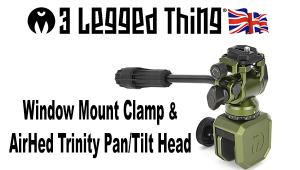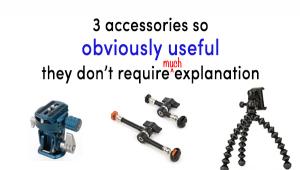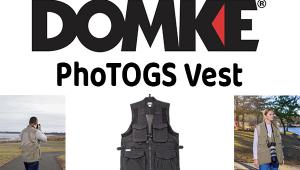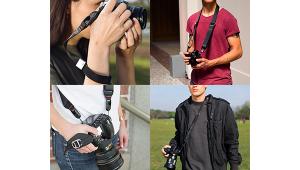June And Photo Ops Are Busting Out All Over: The Right Tools For The Right Image(s)
“On my fifth birthday Papa put his hand on my shoulder and said, ‘Remember, my son, if you ever need a helping hand, you’ll find one at the end of your arm.’”—Sam Levenson
I received similar advice from my own father on my 17th birthday that ultimately put me on the path to a career—not a job—in photography. The photograph here was made by my friend Danny when we climbed the 897 stairs inside the Washington Monument. Inside the classy vinyl camera bag slung over my shoulder is a Kodak Brownie Hawkeye that my parents gave me for a birthday present. I modified the camera to accept close-up and yellow filters that an uncle gave me as a gift. Even then I was interested in enhancing images, and I had no idea what that might hold, but I was fascinated by computers (and robots) back then as well.

A Clean Lens Is A Happy Lens
Because they’re inexpensive and work the way they should, I’ve been using LensPen products to clean my lenses for almost 25 years. Now they’ve come up with a product with an Invisible Carbon compound, found in their new LensPen Elite ($14.95). It looks snazzy too in its white case with gold trim and I have been happily using the Elite to keep my new Olympus OM-D EM-10 mirrorless camera and lens sparkling.

Speeding The Light
There’s no doubt that speedlights have changed the face of portrait and location photography and I’m looking forward to experimenting with the small speedlights that are part of mirrorless camera systems. Mary has already made interesting images using the tiny SB-N5 Speedlight with her Nikon 1 V1 mirrorless camera. But no matter what kind of speedlight you use, the first thing that needs to change is the quality of the light.
That’s where accessories come into play and LumiQuest has designed an inexpensive ($40.95) Starter Kit that includes their Pocket Bouncer, which redirects light at a 90-degree angle from the flash head to soften the quality of the light by enlarging the light six to eight times more than the flash head’s size. (Remember: The bigger a light source is, the softer it is.) The kit bundle includes the FXtra, a gel filter holder along with red, blue, and yellow special effects gels and green and CTO (Color Temperature Orange) gels to balance your flash with fluorescent or incandescent light. Pulling it all together is an UltraStrap, a non-adhesive mounting strap, all of which fits inside a sleeve that tucks into your camera bag.

Analog Filters For The Digital World
2014 is a photokina year and when I attended my first photokina in 1978 I met Jean Coquin, who was introducing the Cokin filter system to the world. I immediately became an avid Cokin fan and accumulated more than 200 filters in various sizes and formats. In these digital days, I don’t use them as much as before, but there’s still a place in photography for analog filters.
Cokin’s new (round) Pure Harmonie filters appear to be the thinnest and the lightest available. With a thickness of 3.3mm for the Multi-Coated Anti-UV, 4.5mm for the Circular Polarizer, and 9.5mm for the Variable Density Neutral Gray, they are almost invisible when mounted on a lens, plus their shallow profile prevents vignetting. The weight is so minimal you won’t even notice that they’re attached. The filters are elegantly slim but obviously of high-quality construction, and I like that they’re compatible with all lens caps, something not always true with thin filters. The Pure Harmonie filters are multi-coated and rugged enough to withstand environmentally challenging working conditions, which is my main reason for using analog filters. And if you thought the packaging of Cokin’s modular filters were ruggedly stylish, Pure Harmonie tops ’em all.

See Dick Run, CFast
CFast memory cards were announced in 2008 as a variant of CompactFlash and are based on the Serial ATA bus rather than the Parallel ATA bus used by CompactFlash. In 2011, Nikon and Sony backed a different format called XQD. In 2012, SanDisk and Canon announced CFast 2.0 aimed at high-resolution digital cameras and offering read and write speeds of 1Gbit/s and storage capabilities beyond 2TB. Alas, it’s not backward compatible with either CompactFlash or even the original CFast. Lexar joined SanDisk at CES 2014 supporting CFast 2.0 for high-end memory cards, announcing 3333x models with capacities of 32GB, 64GB, 128GB, and 256GB. Lexar’s CFast 2.0 card reader has a USB 3.0 interface so you can transfer images at speeds up to 500MB/s. Anybody remember xD cards?
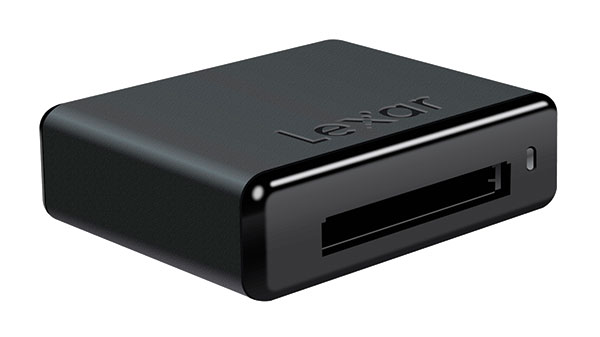
Digital Retro Style
Retro digital cameras are all the rage—look at the Nikon Df—but the AC Gears Bonzart Ampel Tilt-Shift camera takes it in a new direction. It’s a twin-lens digital camera that makes tilt-shift photos and video through its two lenses. While the styling seems more Lubitel than Rollei, there’s no denying the Bonzart Ampel has a funky retro look that hipsters will love and I kinda like myself, although the $180 price tag seems a bit steep for an impulse buy. This 5-megapixel (2592x1944) camera with fixed focus 9mm f/2.8 lenses has a 2” LCD screen and can capture in normal (4:3) or square (1:1) modes. It has a 4x digital zoom, four different color balance modes, and even a self-timer. Two ISO modes are included, Auto and 100, and you can capture images in standard, vivid, black and white, sepia, and “refreshing” (whatever that is). If you want to one-up everyone on the next photo walk, bring along a Bonzart Ampel and you’ll be treated like a star.

Virtual Studio Lighting
elixxier Software is a German software company that’s developed set.a.light 3D, a program that simulates indoor flash photography setups. It measures the characteristics of different light modifiers and recreates them inside a virtual studio to match real-life examples. This means you can test a light modifier before you buy it, but more importantly you can test setup ideas and be reasonably sure to get the same result in your actual studio. The software might be interesting for two reasons: on assignments, when time is limited, you can preview the lighting without having a stand-in, although the chance of this happening is slim, since for most assignments like this an assistant would be there anyway. Far more likely is for the small, in-home studio where you don’t have easy access to a model (something that’s always a challenge in my own case), and the software lets you experiment with lighting before a shoot, maximizing shooting time when the real subject shows up. The Basic Edition includes three room templates and five light sources. The Premium Edition has infinitely adjustable shooting spaces and an unlimited number of light sources, something the “every light available” shooter will like. At current exchange rates the Basic Edition costs $57, while the Premium Edition is $206.
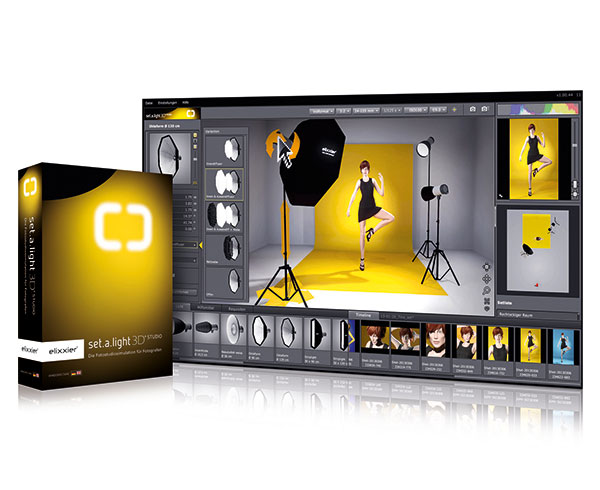
Contact
AC Gears: www.acgears.com
elixxier Software: www.elixxier.com
LensPen: www.lenspen.com
Lexar: www.lexar.com
LumiQuest: www.lumiquest.com
OmegaBrandess (Cokin): www.omegabrandess.com



